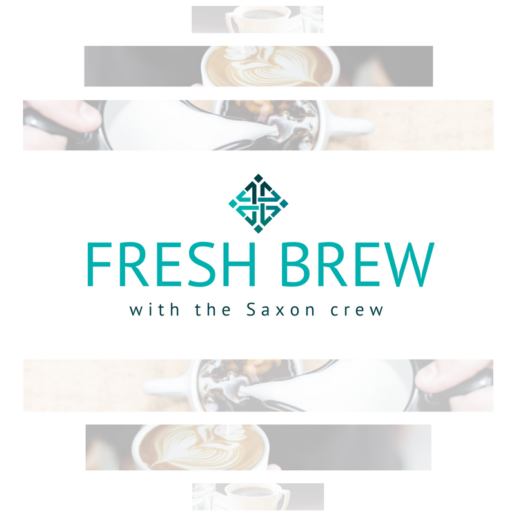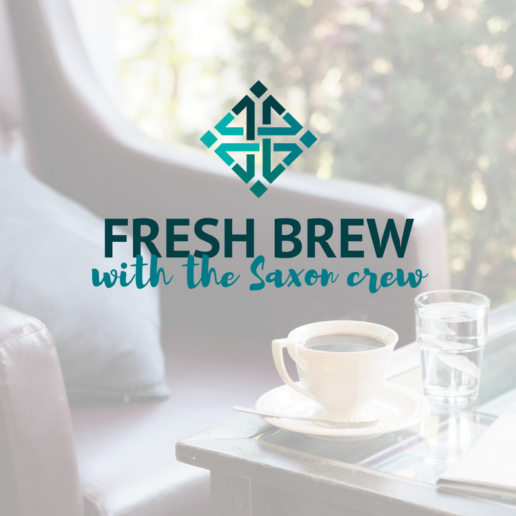School and office closures are a logistical nightmare for working parents
While COVID-19 is affecting travel plans and workplaces, it's beginning to have school districts close down to reduce the spread of any germs to children. Although keeping the safety of children a priority, working parents are being faced with challenging situations regarding the care of their children while they are at work. Read this blog post to learn more.
Last weekend, Jannell Nolan woke up to dozens of texts: Elk Grove Unified School District had announced its decision to close all of its 67 Sacramento County schools in California for the next week after a student tested positive for coronavirus.
That sent all four of her kids — two elementary schoolers, a middle schooler and a high schooler — home for the foreseeable future and left her doing full-time childcare. Nolan works for the district, so she's staying home while her husband is working at a nearby Costco Wholesale.
“My kids have playdates planned for the rest of the week,” she said. “I’m not going to keep them locked up all week, I’ll lose my mind.”
It's not ideal, but at least the family has one parent who won’t have to negotiate work and childcare schedules.
In the U.S., having a stay-at-home parent is a luxury that’s proving even more beneficial as schools shutdown and offices send employees home. A majority of American mothers with children younger than 18 are employed and in more than 60% of married couples, both parents work, according to data from the U.S. Bureau of Labor Statistics. With relatively little parental leave, fewer sick days and rigid schedules, working parents in the U.S. have a lot to juggle even when school is in session and everyone is healthy.
Coronavirus is adding new complications for that already stretched-thin demographic. Parents are scrambling to find childcare or figuring out how to be productive at home with kids around. Others are making tough choices between a paycheck and their families’ needs. Anxieties are even creeping up in places where the virus has not yet disrupted daily life.
“People are more stressed around the logistics than the actual disease,” said Elizabeth Gulliver, a mother of one and co-founder of Kunik, a membership-based community for working parents.
Alexa Mareschal, a Salt Lake City-based attorney, said she has “no idea” what she and her husband, who also has a full time job renovating homes, would do if her kids’ daycare is closed because of the virus. She finds it nearly impossible to be productive when working at home with her toddlers. “It’s kind of like trying to wrangle cats,” she said.
If widespread childcare and school closures come to Utah, Mareschal said she and her colleagues have discussed setting up a makeshift daycare for everyone’s kids, where the oldest ones would watch the younger ones. Other than that, she has no plan. “I’ll fly in my mom, I guess?” she said.
Like Mareschal, many working parents not yet affected by school or office closures are worrying about the feasibility of family quarantines. “The idea of being cooped up in my house trying to work with my kids running around for two weeks is not making me happy,” said Rachel Cherkis, a marketing manager for EY and mother of two, who already works remotely in the Miami area full-time. “There’s definitely not enough sound-proofing in my house.”
Brooklyn-based lawyer Colleen Carey Gulliver and her banker husband have started having conversations about what they’ll do if their three-year-old’s school closes. They may have to alternate days off work to watch their toddler. In the case that they both end up quarantined at home, she “might have to rely on TV more than you would like to get some actual time alone.”
In a way, these anxieties are for the privileged: Only 29% of the American workforce can do their jobs from home. To quarantine, most workers would have to take time off and many would forgo pay. Mendy Hughes, a single mother of four, has been working at a Walmart in Malvern, Arkansas, for the past decade and now makes a little more than $11 an hour. Not only is the 45-year-old cashier concerned about getting sick with the virus herself, she’s worried about what she’ll have to do if her kids, the youngest of whom is 10, had to stay home from school.
“I don’t know what I would do if they had to be on extended leave,” said Hughes, who is also a member of the Walmart watchdog organization United for Respect. “I’m a single parent so I really can’t afford to miss work.”
The U.S. is one of the only industrialized countries without federal paid sick leave. In light of the pandemic, President Donald Trump is expected to sign an order that would give some to hourly workers. Walmart this week also tweaked its own policy and now offers up to two weeks pay to employees who contract the virus or those who have to quarantine. These programs don’t necessarily cover the illness of a child or school closures.
No matter the situation, much of the care-taking and household burdens would likely fall to women, further exacerbating gender inequality. A 2017 survey by the Kaiser Family Foundation found that working mothers are more likely to take care of sick kids than working fathers. Among mothers surveyed, about 40% said they’re the ones who take care of a sick child, compared to 10% of fathers surveyed. Women with young children also do twice as much childcare as men, according to the U.S. Bureau of Labor Statistics. They also do more cooking, cleaning, and laundry. This all contributes to the so-called “motherhood penalty,” which accounts for the bulk of the gender pay gap.
There may, however, be long-term benefits to this experiment, Gulliver, the Kunik co-founder said. She’s hopeful that this experience will change some of the harmful stereotypes around working parents that tend to hurt women.
“If you were not visibly pregnant at the office for all nine months of your pregnancy, a lot of people don’t even know that you’re a parent,” Gulliver said, explaining that’s the case for fathers, adoptive parents and step parents, among others. “Being forced to work from home and having kids pop up in the back of screens is going to show that you don’t necessarily need to hide that you have a kid.” This visibility could push employers to support the needs of employees with children.
Still employers can’t fix everything. Marketing manager Cherkis, who already telecommutes full time, said that despite the fact that her husband is the stay-at-home parent to their two kids, some things still fall to her.
“At the end of the day I’m mom, and sick kids want to be with mom,” Cherkis said. “That’s the truth of it."
SOURCE: Bloomberg News. (13 March 2020) "School and office closures are a logistical nightmare for working parents" (Web Blog Post). Retrieved from https://www.benefitnews.com/articles/school-and-office-closures-are-a-logistical-nightmare-for-working-parents
Coronavirus Impacts Business Travel
With the Coronavirus being a major discussion for all travelers, many businesses are canceling meetings and events that require traveling. Continue reading this blog post to learn more about how the Coronavirus is impacting business travel.
To go or not to go: As the coronavirus spreads, more and more companies are opting to cancel long-planned conferences and tours, ditching all but the most essential business travel, and even warning employees to rethink their vacation plans or be prepared for an at-home quarantine.
Nestle made news last week when it announced plans to halt all international travel and limit domestic trips, but it was one of many companies to do so. A survey of member companies by the Global Business Travel Association, released Feb. 27, found that 65 percent of the 401 respondents had already cancelled at least a few meetings or events. More than half had nixed international travel to places beyond China, including some European countries. To keep a handle on the rapidly evolving situation, 43 percent of respondents had instituted new trip approval procedures.
"I think the major takeaway is that safety is the main concern for all travelers," said association spokesperson Meghan Henning. "Once companies feel that the virus has been contained, we are confident that travelers will be back on the road."
So far, though, the virus is not contained, and employers are scrambling to keep up. On Feb. 4, National Symphony Orchestra Executive Director Gary Ginstling announced the cancellation of performances in China for an upcoming Asia tour, but he said he was confident the Japan leg would be unaffected. "We'll be there for eight or nine days," he assured the public and NSO musicians. However, only a couple weeks later, on Feb. 28, the Japan tour was eliminated as well.
Should They Stay or Go?
The difference between a reasonable response and overreaction seems to change hourly. How can employers ensure they are making responsible decisions? Management specialists recommend the following:
- Frequently check travel advisories from the Centers for Disease Control and Prevention (CDC) and the World Health Organization (WHO).
- Update internal travel approval procedures to make sure managers know where all employees are traveling.
- Communicate clearly with employees about travel decisions and listen to any concerns they might have.
- Be prepared to be flexible.
Employers are obligated under the Occupational Safety and Health Act to provide a workplace free of known safety and health hazards, and workers have a right to refuse work that they consider to be dangerous under certain circumstances. That could include travel to destinations at risk for the coronavirus.
Beyond that, companies would do well to err on the side of caution, said David Michaels, a professor of public health at George Washington University and assistant secretary of the Occupational Safety and Health Administration (OSHA) for seven years during the Obama administration.
"Every employer has to consider whether or not the risk [of travel] is warranted—not just the destination but the plane trip itself," Michaels said. "It's a moving target right now. If you can avoid [having employees travel] as much as possible, you're going to be better off because when you minimize employee exposure, you improve your ability to function in the long run."
Courtney Harrison, chief human resources officer for San Francisco-based tech company OneLogin, said employee travel decisions are being made there individually, after consulting the CDC and WHO websites. "We are not mandating any restrictions at this point," she said. "We will work on a case-by-case basis with each employee to assess the safest path for that person."
Harrison said one challenge is ensuring the safety of colleagues and customers when an employee returns from a virus-prone area, whether for work or vacation. "[Our policy requires that], when an employee returns from an at-risk geography, they self-quarantine themselves for at least 14 days and they stay in close contact with HR," Harrison said. She noted that the company, which is in the business of providing secure login platforms, is well-positioned for remote work. "It might be the right time to reframe this challenge and use it as an opportunity to learn and practice a new way of working."
When Travel Is Part of the Job
For some, of course, travel is an integral and unavoidable part of the job. Take, for example, flight attendants, who not only travel globally but also interact with passengers along the way. The Association of Flight Attendants (AFA), the union that represents attendants at 20 airlines, has been posting the latest CDC alerts to its website and pushing airlines to provide greater protections and even curtail some flights. "AFA leaders at each airline are working directly with airline management through our contracts and other means to mitigate the impact," the union announced on its website.
The Allied Pilots Association also has been actively monitoring the coronavirus response. In late January, the union filed suit against American Airlines to stop all flights to China and encouraged pilots to refuse to fly there. The following day, American, which had already curtailed some flights to China, announced that all were canceled.
As employers scramble to get ahead of the fast-changing travel landscape, they must also consider when travel bans should end. At this point, that's one of many unanswered questions. The WHO website cautions against indefinite travel bans, saying they "may only be justified at the beginning of an outbreak, as they may allow countries to gain time, even if only a few days, to rapidly implement effective preparedness measures. Such restrictions must be based on a careful risk assessment, be proportionate to the public health risk, be short in duration, and be reconsidered regularly as the situation evolves."
Until then, monitoring public information sites and communicating with employees are key. "Our industry's first priority is the health and safety of the business traveler," said Scott Solombrino, executive director of the Global Business Travel Association, "and our members are being appropriately cautious and proactive in their approach to the situation."
SOURCE: Cleeland, N. (03 March 2020) "Coronavirus Impacts Business Travel" (Web Blog Post). Retrieved from https://www.shrm.org/ResourcesAndTools/hr-topics/employee-relations/Pages/Coronavirus-Grounds-Business-Travel.aspx
Fresh Brew With Jake Meyer
Welcome to our monthly segment, Fresh Brew, where we will be exploring the delicious coffees, teas, and snacks of some of our employees! You can look forward to our Fresh Brew blog post on the first Friday of every month.
“Educate your employees about their benefits. The more they understand them, the more they will realize how big of a benefit they are.”
Jake Meyer is an Account Executive at Saxon Financial Services
Jake Meyer joined the Account Management team in December 2015 after previously working in operations for the Cincinnati Reds. He holds a B.A. Cum Laude in English Writing and Political Science, from the University of Pittsburgh.
Outside of the office, Jake enjoys spending time with his family and friends. He is an avid sports fan, and likes to attend sporting events as often as possible.


Rhinegeist Truth
Jake enjoys drinking Rhinegeist Truth which is a local Indian Pale Ale from the Rhinegeist Brewery in Cincinnati, Ohio.

Jake doesn’t have a particular favorite snack that he eats when sipping on his favorite brew. He instead likes to enjoy the hops in his favorite IPA.
Common interview answers can say a lot about potential employees
Interviews can be stressful, long and overwhelming but the process can represent the first impression of a potential employee and can illustrate how they might communicate with colleagues and clients. The interview process can allow recruiters to get an understanding of who the candidate is. Continue reading this blog post to learn more about how common interview questions can show a lot about potential candidates.
The interview process is stressful for everyone involved. Employers are eager to get candidates through the door and candidates are overwhelmed about giving the perfect interview. Hiring managers should always consider a candidate’s past experience and expertise when looking to fill a position. However, looking closer at the way candidates approach basic interview questions can also provide valuable insight.
Sometimes, answers to the most common interview questions provide recruiters with the knowledge needed to get a clear understanding of who a candidate is. Although simple on the surface, when asking questions like, “tell me about yourself” and “why do you want to work here,” you are gaining important knowledge on how well a candidate will communicate with other employees and clients. It can also reveal their ability to take feedback and apply it, and how prepared they are for the interview.
“Tell me about yourself.”
Although this request is commonly used as an icebreaker, it is crucial to the interview and screening process. This is the candidate’s chance to give you a quick, comprehensive look into who they are as a person and a professional. Since this is such a popular, and expected, question in interviews, candidates should be prepared to provide a memorable, concise answer without feeling the need to ramble.
Look for a healthy blend of information on a candidate’s personal life, professional journey and some background information. Depending on the position and person, a good answer can include whether or not a candidate moved a lot growing up, classes they took in college that are relevant to the job they are applying for, or a little about their work history and personal life. When done correctly, a candidate will leave you with something to remember them by. At the same time, an effective answer also includes a candidate’s motivations and where they see their career long term.
“What is your biggest weakness?”
This question is notorious for prompting insincere and generic responses such as, “I’m always working late,” instead of giving an actual answer. Rather than accepting watered-down responses like these, challenge candidates to elaborate by pushing them out of their comfort zone.
Take the “working late” example – this response could indicate a time management issue, and it gives you an opportunity to question why they were unable to complete tasks during their allotted time. Use this to gauge whether or not the candidate is qualified for a particular position, and allow them to expand on how they plan to keep improving.
When discussing the biggest weakness, look for answers that reveal if they recognize their professional flaws, if they are working to improve and if they can take feedback from managers. It is key to seek out candidates who are willing to improve and achieve continuous growth.
“What would your previous manager say about you?”
An effective answer to this question should always go beyond “they loved me” – it should include a combination of honesty, vulnerability and directness.
If a candidate is having a hard time answering this question, ask them to simply summarize the feedback of their previous manager, which should include both positive and realistic points. For instance, an ideal response explores the areas where the candidate needed additional coaching, where they had the biggest opportunity to learn and what would have made their manager most proud.
“Do you have any questions for me?”
This is a classic interview-closer, but it is also yet another opportunity to see how prepared the candidate is for the interview and how interested they are in the job. Candidates who come prepared with a list of questions show that they have done their homework and have a genuine interest in learning more.
At the same time, you also want someone who has been engaged during the interview and is able to adapt. If they have questions on their list that have been answered during the interview, they should still go through them and refer to the previously discussed answer. Questions referencing specific aspects of the company, such as something they found in their research, also show that a candidate isn’t taking the same questions to every interview.
Although a normal process for most interviews, simple and common questions can tell a lot about a person and how they carry themselves in unique situations. In addition to other attributes (experience, professionalism, etc.), looking at how candidates respond to these go-to questions can give hiring managers great insight into what they can offer to the company.
SOURCE: Blanco, M. (25 February 2020) "Common interview answers can say a lot about potential employees" (Web Blog Post). Retrieved from https://www.employeebenefitadviser.com/opinion/common-interview-answers-can-say-a-lot-about-potential-employees
Vaping in the workplace is a bigger problem than most employers think
Smoking policies have been set in many workplaces, but policies regarding vaping are not typically addressed. Although vaping has become a trending topic, it may not be as heavily discussed as it should be. Read this blog post to learn more about vaping in the workplace.
According to the recently released Surgeon General’s Report on Smoking Cessation, just 3.2%of U.S. adults vaped in 2018. That’s a pretty low number, and it’s been stable for about the past 5 years. But new research shows that vaping in the workplace is a much bigger concern than many employers recognize, and it actually has as much to do with those who do not vape as it does with those who do.
The Innovations Center within Truth Initiative recently surveyed 1,620 U.S. employed adults from a range of industries and companies to ask about their experience with vaping in the workplace. What we found was surprising:
- 63% of respondents said vaping in the workplace bothered them. Non-vapers are more bothered than vapers, with 69% of non-vapers saying vaping in the workplace bothered them versus 40% of vapers.
- 72% of respondents said they “sometimes” or “often” see vapor clouds from vapes or e-cigarettes at work.
- 41% of respondents said they “sometimes” or “often” notice coworkers vaping near their workspace.
Vaping isn’t harmless, either for e-cigarette users themselves or for those exposed to secondhand aerosol. First and foremost, the long-term effects of e-cigarette use are not yet known. Most e-cigarettes contain nicotine, which is highly addictive. In addition, the aerosol from e-cigarettes can contain cancer-causing chemicals.
There are risks for non-vapers too, from secondhand exposure to e-cigarette aerosol. A National Academies of Sciences, Engineering, and Medicine (NASEM) report examined more than 800 peer-reviewed studies and found conclusive evidence that secondhand exposure to e-cigarettes poses risks. These health risks are particularly high for vulnerable populations like pregnant women and people with respiratory disorders like asthma.
In addition to health concerns, decreased productivity related to vaping is also important to have on your radar. In our survey, 55% of non-vapers agreed that vaping in the workplace decreases productivity for those who do not vape; further 70% of non-vapers agreed that vaping in the workplace decreases productivity for those who do vape. What this means is that even if you have a small number of people vaping at work, those handful of people who are vaping may be affecting a much larger segment of your workforce.
Vaping may also be distressing your employees in other ways. For example, two-thirds of parents of teens and young adults were very/extremely concerned that their children were vaping. Our survey found that this concern translates into being less productive at work for 18% of parents of children who vape. With more than five million young people vaping today, it’s likely that a significant number of parents in your workforce are struggling with this issue.
These parents’ concerns are valid. Twenty eight percent of high school students are current e-cigarette users, up from 20.8% in 2018. And, to make matters worse, most parents are flying blind. According to Truth Initiative research, almost 75% of parents indicated they received no communication from their child’s school regarding e-cigarettes.
So, what should companies do about vaping in the workplace? The first step: add vaping to your workplace no smoking policy. Numerous progressive companies are already doing this, but our research found that about half of respondents said their company did NOT have a formal, written policy that addresses vaping in the workplace. In short, there’s ample opportunity.
There are a few reasons why adding vaping to your no-smoking workplace policies makes sense. First, you need to protect all employees from exposure to potentially harmful particulate emissions. Second, there are risks that e-cigarette devices can explode at work, causing burns and projectile injuries to employees. From 2015 to 2017, there were an estimated 2,035 e-cigarette explosions and burn injuries reported in U.S. hospital emergency departments. Banning e-cigarette devices eliminates the risk posed by malfunctions in the workplace.
Finally, including e-cigarettes in your no smoking policy creates a supportive environment for quitting. Few vapers use e-cigarettes exclusively; nearly 60% of adult e-cigarettes users were also smokers according to a 2015 CDC survey. Being able to use e-cigarettes at work may prolong or intensify their addiction and make it more difficult to quit smoking. By eliminating the possibility of continuing to use e-cigarettes at work, you may increase the likelihood that smokers can quit, and stay quit. That’s good for smokers, and good for your business.
What else can employers do? In our research, 68% of respondents said their company either did not encourage e-cigarette users to quit or didn’t know if such a program existed. Yet, 61% of respondents said providing support to e-cigarette users who want to quit was very/extremely important. Adding a tobacco cessation program to your list of benefit offerings simply makes good sense.
Bottom line: vaping in the workplace is important to address, largely because vaping can impact everyone in your workforce. It’s time to add vaping language to your workplace tobacco policies—and evaluate options to add a smoking cessation program that provides tailored support to e-cigarette users and even parents of kids who vape. Your employees will thank you for it.
SOURCE: Graham, A. (20 February 2020) "Vaping in the workplace is a bigger problem than most employers think" (Web Blog Post). Retrieved from https://www.benefitnews.com/opinion/vaping-in-the-workplace-is-a-bigger-problem-than-most-employers-think
Employees are fearful of being replaced by automation
Technological advances are starting to scare employees regarding job security. Although automation is creating a scare, companies are using technology to transform and improve productivity within their organization. Read this blog post to learn more regarding the benefits of automation technology in the workplace.
Automation is transforming businesses and directly impacting bottom lines as a result of improved productivity. But it also raises employees’ concerns about their job security, according to a new study by research firm Forrester and UiPath, a robotic process automation (RPA) software company.
Some 41% of companies say their employees are concerned that their existing digital skills may not match what their job will require in the future, the study finds. However, by training employees, providing them vocational courses, or encouraging them to pursue digital qualifications, companies can help them to overcome fears around automation and embrace it as a productivity-boosting asset.
“We need programs that not only train you to be a better employee at an institution, but advances your digital skills as well,” said Craig Le Clair, vice president and principal analyst at Forrester, speaking during a recent webinar. “We need a new form of education and training that can keep pace with the technology, particularly due to automation.”
Companies having their own training programs at work — trying to mimic the kind of experience that you have in traditional education — is a legitimate and important development, because traditional education cannot keep pace with what's going on, Le Clair said.
Companies are increasingly investing in automation — including technology like AI and RPA — and is now the driver of most organizations’ digital transformation strategies. For 66% of companies in the study, RPA software spend is going to increase by at least 5% over the next 12 months. Forrester predicts that the RPA services market will reach $7.7 billion, and eventually balloon to $12 billion by 2023.
The dynamics of the labor market, technical feasibility, and acceptance of the more advanced AI building blocks like deep learning and conversational intelligence are just some of the factors that will determine the pace of workforce automation.
Automation can not only benefit employers, but also employees. Automating repetitive, rule-based tasks enables employees to focus on higher-value activities that require advanced skills and improves employee engagement. The study found that a 5% improvement in employee engagement leads to a 3% increase in revenue, indicating that more engaged employees means higher growth.
“Organizations can view the future of work as a competency, as something that they have a view on and has a distinguishing approach to,” Le Clair said. “This is going to help with recruiting and retention, and help [companies] deal with these transformations that are occurring. It can change the way you serve customers for the better. You can get more of your humans working on the thing that humans do the best, which is carrying on conversations with other humans. [Automation helps you] extract that labor value and move it into the right places.”
SOURCE: Nedlund, E. (12 February 2020) "Employees are fearful of being replaced by automation" (Web Blog Post). Retrieved from https://www.benefitnews.com/news/employees-are-fearful-of-being-replaced-by-automation
Job Hoppers Seek Better Rewards, Recognition and Career Growth
Did you know: Only 33 percent of employees state that they are committed to staying at their jobs. If employees are disengaged from their work, it is easier for them to find other opportunities with promising recognition, rewards, and growth. Read this blog post to learn more about why employees might be searching for more generous benefits.
Employees have high expectations when it comes to job perks, and, if their employer doesn't offer what they want, they'll find another that will, new survey findings show.
Only one-third of employees (33 percent) say they are committed to staying at their jobs in 2020, compared to the 47 percent who had the same intention for 2019, according to the 2020 Engagement & Retention Report by employee-recognition software firm Achievers.
As the labor market stays tight, it's easy for disengaged employees to find work elsewhere. And they might try to: Just 19 percent of employees surveyed consider themselves "very engaged," while 14 percent say they are fully disengaged. Even the 32 percent with "average engagement" said they were open to new job opportunities.
The survey, conducted in October 2019, received 1,154 responses from employees across North America who were asked about their intentions for 2020.
"A substantial portion of today's workforce already has one foot out the door," said Natalie Baumgartner, Achievers' chief workforce scientist. Unless employers take steps to reverse these feelings, she said, "the risk of turnover and underperformance in 2020 is immense."
The survey found that the top three reasons employees are considering leaving their jobs are:
- Compensation (cited by 52 percent of respondents).
- Career growth (43 percent).
- Recognition (19 percent).
Employees Feel Unheard, Unrecognized
Ninety percent of workers said they are more likely to stay at a company that asks for, and acts on, employee feedback. But when asked how good their manager and company are at soliciting feedback, the most common answer was just "OK," asking for it once or twice a year. As for their employers acting on feedback, "OK" was again the most common response, at 44 percent. These employees said their manager and company only talk about feedback and make few changes based on it.
Companies should make sure that employee feedback reaches managers, Baumgartner advised, and equip managers to use this feedback to address staff needs "in a personalized and timely way." These actions, she noted, can range "from small acknowledgements to larger changes that improve the employee experience and, as a result, improve engagement and retention."
As for recognition, 82 percent of surveyed employees "strongly" or "somewhat" agreed that they wished they received more recognition at work, and another 30 percent of employees said they feel "not very" or "not at all" valued by superiors.
"When organizations recognize everyday behaviors that align with their culture and goals, they help reinforce them as well as the role each employee plays," Baumgartner said.
Frequent vs. Infrequent Job Changers
After wanting more money, feeling unappreciated is the top reason infrequent job changers could be driven to leave, another recent survey found.
Joblist, a website that compiles jobs from leading job boards, last October asked nearly 1,000 workers throughout the U.S. what would make them consider accepting an offer from another employer and then compared responses from frequent and infrequent job hoppers—those who had held two or more jobs in the past five years and those who had held just one job during the same period.
The average minimum salary increase that respondents seeking other jobs would accept to stay at their current employer was $15,491, which represents a 25 percent increase, on average, over the past five years. Perks such as unlimited paid vacation, student loan assistance and paid parental leave were cited by frequent job changers as factors that would make a potential employer more attractive.
"These perks may appeal more to younger workers who are less likely to have a 'lifer' mentality" toward their employer, according to Joblist.
While both frequent and infrequent job switchers said they would leave jobs for better pay, "people who switch jobs infrequently are more likely to leave because of feeling underappreciated or undervalued," according to Joblist. "For the most part, people who don't change jobs often have made an emotional commitment to their employers, so when they feel slighted because that investment isn't being reciprocated, they're more likely to leave." Conversely, people who leave frequently are more likely to see the employer-employee relationship as transactional, "so they're less affected by those feelings."
Is Turnover So Bad?
Turnover can be disruptive and costly, but it can also be an opportunity for employers to find and develop employees who are enthusiastic about the organization and the direction in which it's heading, according to a November 2019 report from compensation data and software firm PayScale.
"Some turnover is actually good for an organization—especially in the case of overpaid, under-performing employees," said report author Conrado Tapado, content marketing manager at PayScale. "Usually employees stay when they feel satisfied and fairly compensated for their work. But sometimes, employees stay for less positive reasons," he noted, including:
- They are overpaid. "Being overpaid leaves little incentive for workers to look for another job. They may realize how difficult it will be to find another organization that will match their salary. Thus, they are perfectly happy to stay where they are."
- They value their benefits. "Benefits are meant to help drive retention, which is generally a good thing. However, sometimes employees remain just for the benefits but would rather be working elsewhere. Eventually, those 'golden handcuffs' will begin to chafe, and your employees may start to feel resentful."
Health care, retirement savings and paid-time-off benefits should be competitive and focused on helping employees remain productive and feel financially secure, without becoming so rich that employees don't feel they can leave, the findings suggest. Pay should be calibrated to reward performance through variable compensation tied to achieving personal, team and organizational goals, with base pay increases made according to merit and not treated as an entitlement.
The Right Benefits Balance
"Creating a benefits package that incentivizes good employees to stay without deterring uninspired employees from leaving can be tricky," said Amy Stewart, PayScale's senior content marketing manager.
That can happen when employers offer benefits with a high monetary value that employees only receive if they stay put and hold tight, such as pensions or stock options that vest over time. People can also stay in an unpleasant situation for benefits that would be hard to find elsewhere, such as a paid sabbatical, a four-day workweek or paid child care, Stewart said.
A possible solution is to "experiment with rewarding some benefits in exchange for high performance, such as Fridays off or opportunities to work from home only if certain metrics are hit," she said.
Compensation is similar, Stewart explained, as employees with above-market pay are often reluctant to leave. "When you have a highly paid employee who isn't performing to a high standard, sometimes the answer isn't a change in compensation or a new job, but a new challenge. If their interest in their current work is waning, they might need new work, but it doesn't necessarily have to be at another organization," Stewart said. "Employees who have stopped learning in their current position may become revitalized in a position that offers them new opportunities to grow."
SOURCE: Miller, S. (06 February 2020) "Job Hoppers Seek Better Rewards, Recognition and Career Growth" (Web Blog Post). Retrieved from https://www.shrm.org/ResourcesAndTools/hr-topics/benefits/Pages/job-hoppers-seek-better-rewards-recognition-career-growth.aspx
Top Challenges for Managers in 2020
Technology and rising trends are creating new challenges for managers to handle. Different situations regarding employees from Generation Z and gig workers, mental health and vaping are creating new ways for managers to interact with employees. Read this blog post to learn more regarding how managers are facing these trials.
Managers in 2020 will face some new challenges, many having to do with their youngest workers. Among those challenges: leading employees from Generation Z and gig workers, addressing mental health issues and helping vapers kick the habit.
Understanding Generation Z
Generation Z workers—generally, those born in 1995 or later—should be on every manager's radar. "Within the next two or three years, they will become the fastest-growing percent of the workforce," said Jason Dorsey, a Generation Z researcher and co-founder of the Center for Generational Kinetics, a research and solutions company in Austin, Texas.
"They don't remember a time before smartphones or social media," he said. They live on their phones, not their laptops, and that's the way they want to communicate—on and off the job. "Gen Z expects to go through the entire application process on a mobile device."
Dorsey said managers often tell him that they don't remember young adults asking about retirement plans, but today's young workers do. "It's the aftershock of the Great Recession, when they saw their parents struggle," Dorsey said.
And Generation Z considers flexible scheduling to be a given, not a perk, Dorsey said. He advises managers who want to attract and retain young workers to offer not only flexible schedules but also flexibility on a start date and the ability to work remotely.
Finally, employees from Generation Z want to have access to their pay beyond the typical twice-a-month paycheck. Platforms such as Instant Financial, which allows workers to access a portion of their pay after every work shift, are appealing, Dorsey said.
Holding on to Generation Z employees may take some coaxing, said Cheryl Cran, founder of NextMapping, a future-of-work consultancy headquartered in Vancouver, British Columbia, Canada. "They are far more entrepreneurial than any other generation," she said, noting that many are gig workers by choice because they value their freedom. Hence, she said, "managers need to think about how to give them freedom" in a traditional job, whether that means offering remote work, flexible scheduling or another solution.
Understanding Gig-Worker Laws
An estimated 15 million adults in the U.S. have alternative work arrangements, according to the Bureau of Labor Statistics. However, concerns about whether employers should classify these workers as employees has spurred states to propose task forces or legislation, according to the National Conference of State Legislatures. Congress, meanwhile, is assessing H.R. 2474, Protecting the Right to Organize Act of 2019. The aim of these efforts is universal: to stop the exploitation of nonemployee workers.
But that goal can misfire, contend some gig workers who are worried about losing their livelihood. California's AB 5, which took effect Jan. 1 and requires businesses to reclassify many independent contractors as employees, has already triggered controversy, including lawsuits challenging it on constitutional and other grounds and pushback from independent journalists, photographers, interpreters, musicians, truckers and others the law doesn't exempt.
Many of these independent workers tend to be young adults who value the flexibility that comes with freelancing. But that flexibility can make traditional employees at the same company resentful. Inspiring teamwork will be no small task, said Alec Levenson, Ph.D., senior research scientist at the USC Marshall Center for Effective Organizations.
"We are at the tipping point of employers hiring people from all different [work] arrangements," he said. "There is not enough focus on productivity, how to get people to work together as a team."
Destigmatizing Mental Health Issues
Mental health disorders, according to the U.S. Centers for Disease Control and Prevention, are among the most burdensome health concerns in the workplace. Nearly 1 in 5 adults reported having some type of mental illness in 2017; stress symptoms, such as headaches or feeling overwhelmed or anxious, are also common.
Adults from Generation Z report the highest stress levels, according to the American Psychological Association's 2019 Stress in America survey. On a scale of 1 to 10, 10 being the highest level of stress, Generation Z reported an overall stress level of 5.8. Generation X averaged 5.5, Millennials 5.4 and Baby Boomers 4.2.
In a tight labor market, where there is stiff competition for talent, managers who show concern about their workers' mental health will stand out to applicants and existing employees, said LuAnn Heinen, vice president for well-being and productivity for the National Business Group on Health (NBGH), a nonprofit headquartered in Washington, D.C., that represents large employers' perspectives on health policy.
In a 2019 NBGH survey, 43 percent of managers said they had a formal mental health strategy in place, including strategies to address depression, anxiety and stress; opioid and other substance abuse; sleep disorders; and workplace bullying.
The managers said the most important components of those strategies are making employees aware of the importance of mental health; hosting mental health awareness events; and training managers on what mental health is, how to recognize trouble signs and how to refer workers to mental health resources.
Even the best mental health programs won't succeed, however, if people don't feel comfortable accessing them, Heinen pointed out. Managers who need help talking with workers about mental health issues can turn to programs such as MakeItOK.org.
Helping Vapers Quit
As of Jan. 7, 2020, a lung illness tied to vaping nicotine or products containing tetrahydrocannabinol, the chemical in marijuana responsible for the high, had resulted in 2,668 hospitalizations and 60 deaths. Employees who vape—many of them young adults—may need help to end their habit.
Programs to help people quit need to be tailored to the generation of workers you're targeting and that cohort's preferred communication style, Heinen said.
Truth Initiative, a nonprofit in Washington, D.C., devoted to eliminating tobacco use, has fine-tuned its decade-old digital tobacco-cessation platform developed with the Mayo Clinic. "We launched a program specifically to address the needs of vapers," said Amanda Graham, Ph.D., chief of innovations for Truth Initiative. The quit-vaping program uses text messages, preferred by many younger adults, and includes instant message support if users feel they are slipping.
SOURCE: Doheny, K. (06 February 2020) "Top Challenges for Managers in 2020" (Web Blog Post). Retrieved from https://www.shrm.org/ResourcesAndTools/hr-topics/people-managers/Pages/Top-Challenges-for-Managers-in-2020.aspx
Reminder: Medicare Part D Notices Are Due to CMS by Feb. 29
The federal Centers for Medicare & Medicaid Services (CMS) require disclosures regarding coverage that is either "creditable" or "non-creditable" each calendar year. The notice and disclosure deadline for those who provide prescription drug coverage is due February 29, 2020. Read this blog post to learn more about the Medicare Part D notice.
Each year, group health plan sponsors that provide prescription drug coverage to individuals eligible for Medicare Part D must disclose to the federal Centers for Medicare & Medicaid Services (CMS) whether that coverage is "creditable" or "non-creditable." Prescription drug coverage is "creditable" when it is at least actuarially equivalent to Medicare Part D prescription drug coverage.
The disclosure obligation applies to all plan sponsors that provide prescription drug coverage, even those that offer prescription drug coverage only to active employees and not to retirees. Calendar year plans must submit this year's disclosure by Feb. 29, 2020.
Background
Individuals who fail to enroll in Medicare Part D prescription drug coverage when first eligible may be subject to late enrollment penalties if they go 63 consecutive days or longer without creditable prescription drug coverage. Because of this potential penalty, both Medicare Part D-eligible individuals and the CMS need to know whether a group health plan's prescription drug coverage is creditable or non-creditable.
Plan sponsors that provide prescription drug coverage must furnish Part D-eligible individuals with a notice disclosing the creditable or non-creditable status of their coverage before the beginning of the Medicare Part D annual enrollment period and at certain other times.
Plan sponsors must also disclose to CMS, on an annual basis and at certain other times, whether the coverage they provide is creditable or non-creditable. The submission deadline for this year's disclosure to CMS by calendar year plans is approaching.
Creditable Coverage Disclosures to CMS
Plan sponsors generally must disclose creditable coverage status to CMS within 60 days after the beginning of each plan year. Disclosure is made using the Disclosure to CMS Form on the CMS website. An entity that does not offer outpatient prescription drug benefits to any Part D-eligible individual on the first day of its plan year is not required to complete the CMS disclosure form for that plan year. Plan sponsors that contract directly with Medicare as a Part D plan or that contract with a Part D plan to provide qualified prescription drug coverage are also exempt from the CMS disclosure requirement for individuals who participate in the Part D plan.
In addition to the annual disclosure, plan sponsors must submit a new disclosure form to CMS within 30 days following any change in the creditable coverage status of a prescription drug plan. This includes both a change in the coverage offered so that it is no longer creditable (or non-creditable) and the termination of a creditable coverage option. A new disclosure form must also be submitted to CMS within 30 days after the termination of a prescription drug plan.
The disclosure requirement applies to all plan sponsors that provide prescription drug coverage to Part D-eligible individuals, even those that do not make prescription drug coverage available to retirees.
Calendar year plans must submit this year's disclosure to CMS by Feb. 29, 2020.
| Is disclosure required If an employer doesn't offer retiree coverage? | ||
| All Part D-eligible individuals covered under an employer's prescription drug plan — regardless of whether the coverage is primary or secondary to Medicare Part D — should be included in the disclosure. "Part D-eligible individuals" are generally age 65 and older or under age 65 and disabled, and include active employees and their dependents, COBRA participants and their dependents, and retirees and their dependents. Even employers without retiree coverage may need to file the disclosure. |
Information Needed to Complete Disclosure
In preparing the disclosure to CMS, plan sponsors need to:
- Identify the number of prescription drug options offered to Medicare-eligible individuals. This is the total number of benefit options offered, excluding any benefit options the plan sponsor is claiming under the retiree drug subsidy (RDS) program (i.e., benefit options for which the plan sponsor is expected to collect the subsidy) or that are employer group waiver plans (EGWPs).
For example, a plan sponsor with a PPO and an indemnity option covering actives and an option for retirees for which it is receiving RDS would report two prescription drug options. - Determine the number of benefit options offered that are creditable coverage and the number that are non‑creditable.
- Estimate the total number of Part D-eligible individuals expected to have coverage under the plan at the start of the plan year (or, if both creditable and non-creditable coverage options are offered, estimate the total number of Part D-eligible individuals expected to enroll in each coverage category). This includes Part D-eligible active employees, retirees, and disabled individuals and any of their Part D-eligible dependents and any individuals on COBRA who are Part D eligible.
The estimate should not include any Part D-eligible retirees being claimed under the RDS program or retirees in an EGWP (because that coverage is Medicare Part D coverage).
Individuals who will become Part D eligible after the start of the plan year should not be included in the count for that year. However, they must be provided a notice of creditable or non-creditable coverage prior to their initial Part D enrollment period. - Provide the most recent calendar date on which the required notices of creditable or non-creditable coverage were provided.
| Why doesn't the disclosure requirement apply to EGWPs or retiree plans where employer is receiving RDS payments? | ||
| Employers that provide prescription drug coverage through a Medicare Part D employer group waiver plan are exempt from the disclosure requirement because an EGWP is Medicare Part D coverage.
An employer participating in the retiree drug subsidy program must have already certified to CMS that its drug coverage is creditable. |
In Closing
Plan sponsors should review the instructions carefully before completing the Disclosure to CMS Form to make sure that they have all necessary information, and calendar year plans should report the information by Feb. 29, 2020.
Richard Stover, FSA, MAAA, is a principal at HR advisory firm Buck. Leslye Laderman, JD, LLM, is a principal in the Knowledge Resource Center at Buck. This article originally appeared in the Feb. 5, 2020 issue of Buck's For Your Information. © 2020 Buck Global LLC. All rights reserved. Republished with permission.
SOURCE: Stover, R.; Laderman, L. (06 February 2020) "Reminder: Medicare Part D Notices Are Due to CMS by Feb. 29" (Web Blog Post). Retrieved from https://www.shrm.org/resourcesandtools/hr-topics/benefits/pages/reminder-medicare-part-d-notices-due-to-cms.aspx
Fresh Brew with Nat Gustafson
Welcome to our monthly segment, Fresh Brew, where we will be exploring the delicious coffees, teas, and snacks of some of our employees! You can look forward to our Fresh Brew blog post on the first Friday of every month.
“Always be prepared.”
Nat Gustafson is an Account Manager at Saxon Financial.
Nat began his career at Total Quality Logistics. For four months, he learned to control himself in hectic situations and to better manage his time. Most importantly, he taught himself how to effectively communicate with others in difficult situations.
In his free time, Nat enjoys snowboarding. When thinking about his greatest adventure, he remembers traveling around Italy. He lives by the catchphrase of, “Roll up your sleeves.”


Rhinegeist Truth
Nat enjoys a Rhinegeist Truth, an indian pale ale, from his favorite local spot, Mount Lookout Tavern on Linwood Avenue.

Chicken Wings
Nat enjoys sipping on his favorite brew while eating chicken wings from Mount Lookout Tavern.













